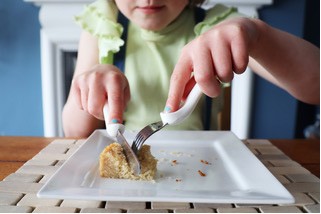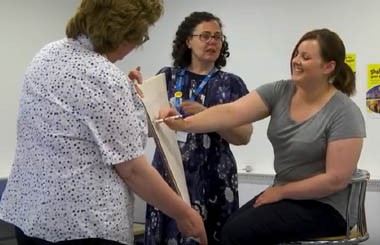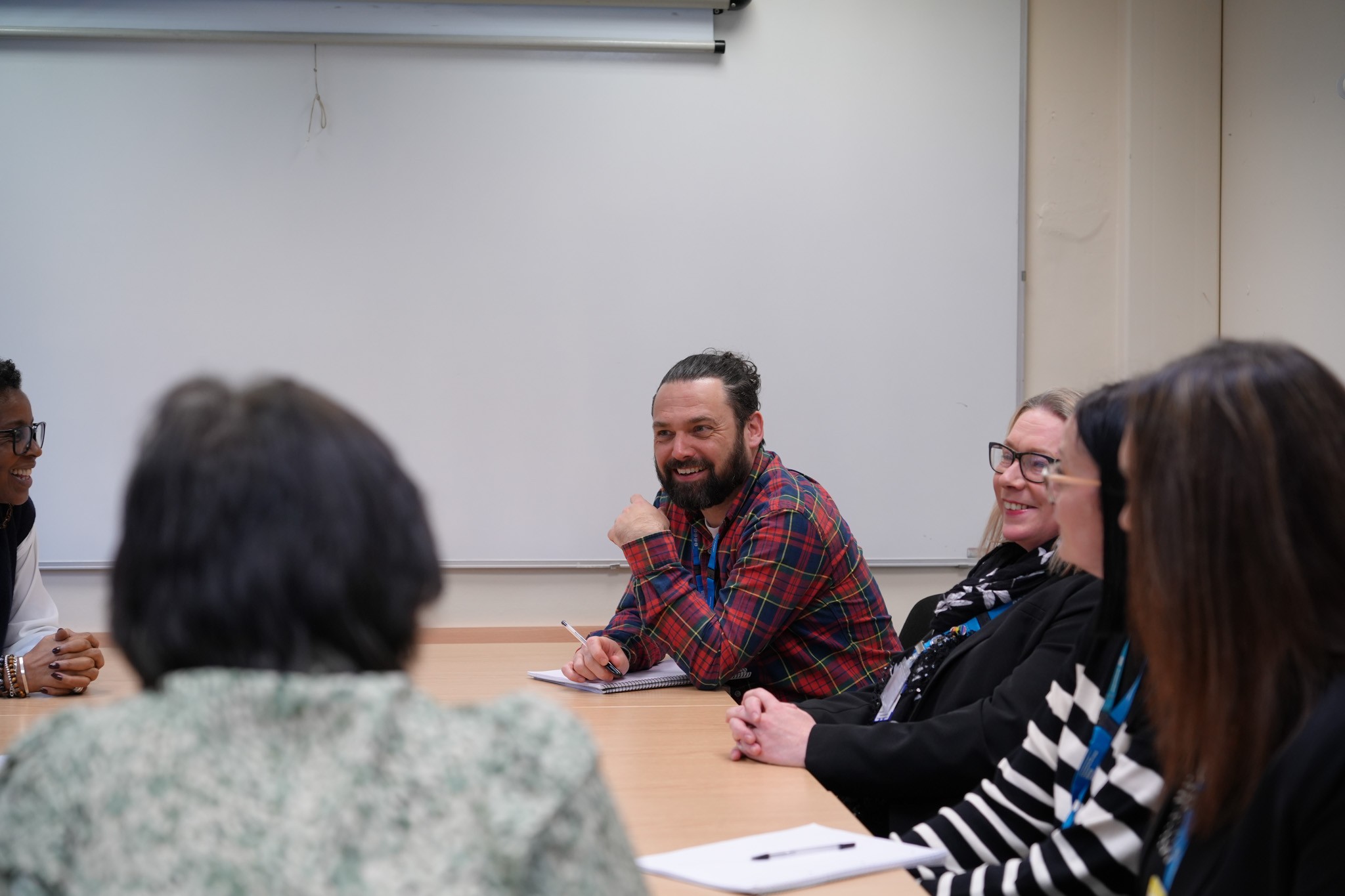On this page…

Our training course for education staff on Developmental Coordination Disorder (Dyspraxia) - details of the next course are below.
School staff may attend our free Movement Wise and Playwise workshops with (or instead of) parents of referred children with Movement Difficulties.
We have an ever-growing list of help sheets which give ideas on various skills and how to support success.
You can call the department to ask for general advice about children with movement difficulties or to discuss whether an OT referral might be helpful for a child. If a therapist is visiting your school for a particular child, and there are others you wish to have a discussion about please let your therapist know so they can allow more time. Please note we cannot give specific advice about a child without consent from the parent, but we are happy to advise on general principles which help and to discuss whether our service is well placed to help or not. Our contact details are at the bottom of this page
We can suggest a range of motor programmes some of which we are able to supply for free to schools in Staffordshire and Stoke-on-Trent.
Writing is a complex skill that relies on many foundational abilities such as visual perceptual skills, visual motor integration skills, cognitive skills, finger dexterity, shoulder stability and core stability, to name a few. The following Handwriting Help Sheets are provided to help give schools ideas on how to develop these foundation skills in children who may be struggling with their writing.
What programmes are helpful to support handwriting?
Many schools use the Dough Disco videos from Shonette Bason to help children gain the movements necessary for writing. You can find these on YouTube.
Before you begin a writing programme, please consider whether the child is developmentally ready to write. If the child's development is behind that expected for their age, introducing writing too soon can lead to abnormal and inefficient pencil grip habits that can cause difficulties later. Instead, offer a multi-sensory approach to learning shapes and letter forms (e.g. tracing patterns with fingers in sand, dough, shaving foam etc rather than pencil practice.)
For children who are ready to write, these programmes are often helpful starting points:
The Write from the Start Programme (Ion Teodorescu)
Helps a child develop the fine motor and perceptual aspects of writing. Comes in three photocopiable books of increasing difficulty. £20 to £30 for the three books
Speed Up Programme (Lois Addy)
Uses movement activities to develop fluent hand control and wrist movements (such as scrunching bandages). For ages 8 and above. Approximately £11
Write Dance
Comes in an early years version (3 to 5 years) and original version (6 years and older). Uses a series of music tracks and themed dance moves to teach the foundational movements children need write. £31 including digital music and video download.
Printing like a Pro
Designed for children who are not ready for cursive writing. A graded programme that uses rehearsal of verbal strategies to learn the letter forms (e.g. down, dot for the letter i). Good for older children with strong verbal ability and cognition, but poor motor skills. Download from Child Development & Rehabilitation - Classroom Resources.
Wheel of Apps
Information technology can support pupils who continue to struggle with aspects of school work as a result of Dyslexia, reading or writing difficulties. The ‘wheel of apps’ has categorised apps that can support pupils with these challenges. Download from CALL (Communication, Access, Literacy and Learning) Scotland
For children with movement difficulties up to the end of Year 6, the Children's Occupational Therapy Service requires that schools deliver a motor programme before referring to our service.
These programmes are not intended for children with a physical disability, nor a diagnosed condition. They are recommended only for children whose movement skills are behind the rest of their development.
Free Motor Programmes
Cool Kids Motor Programme (provided by the OT service)
- Two programmes available: 'Primary' and 'Nursery & Reception'
- Easy to deliver by school staff with simple equipment readily available in schools
- Supports schools to work at targeted level in line with the graduated response
- Gives pupils the opportunity to develop motor skills before seeking specialist NHS referral
Free of charge by email for SENCOs who request it from childrensOT
Solent NHS Trust Programmes
Manchester Motor Skills Programme (MMSP)
- Available free from childrensOT
@mpft.nhs.uk
Fizzy (gross motor) Programme
North Yorkshire Council Motor Skills Programme
- Supporting Children and Young People with Co-ordination Difficulties (pdf) - North Yorkshire City Council
- Go to page 160 (appendix 3) where the programme begins
Paid for Programmes
There is a vast range of paid for Motor Programmes available to purchase online. Some of the common ones are listed here.
| Title | Description | Approximate cost |
|---|---|---|
| Helping Children to Improve Their Gross Motor Skills: The Stepping Stones Curriculum by Rachel White | A4 manual with downloadable PDFs which enable programme delivery and progress to be recorded. Comes with baseline assessment | £25 |
| Jungle Journey | A4 Paperback booklet. A whole-class Programme. Fine and Gross motor | £25 |
| Sensory Circuits | Comes from a sensory approach. Warm ups, skills and cool down format | £10 |
| Smart Moves | Manual with CDROM. Screening tool, Activity Pack | £90 |
| BEAM (Balance, Education And Movement) Programme | 6 week programme. Can replace PE sessions for reception class | £75 |
| Take Ten Fit to Succeed | DVD, three books and teacher’s guide | £49 |
| Motor Skills United | Activity cards, colour-coded by skill area | £60 |
| Fit to Learn | Double DVD and CD training pack | £100 |
Please find an overview, useful information, and links on some of the common conditions experienced by children. We work with children with a range of conditions and difficulties so please contact the service if you require additional information or referral advice.
Hemiplegia is a form of Cerebral Palsy, caused by a brain injury that results in a varying degree of weakness, stiffness (spasticity) and lack of control in one side of the body. The definition comes from the Greek word 'hemi' meaning half.
Hemiplegia is caused by injury to parts of the brain that control movements of the limbs, body, face, etc. This injury may happen before, during, or soon after birth.
We also talk about a right or left hemiplegia, depending on the side affected. Generally, injury to the left side of the brain will cause a right hemiplegia and injury to the right side a left hemiplegia. Hemiplegia is life long and non-progressive.
Useful websites
- Children's Hemiplegia and Stroke Association - Hemiplegia which focuses on the impact on Children and their families, containing lots of information, advice and support.
- Newcastle University: Hemiplegia Research - Fun 'n' Games This website gives ideas for games and toys that can be used to practise movements that children with hemiplegia find difficult, providing a fun way to get the two hands busy working together.
- contact - Hemiplegia support Contact is a charity providing support and information to people with hemiplegia and their families in the UK.
DCD is a neuro-developmental condition that affects physical coordination. It causes a child to perform less well than expected in daily activities for their age and appear to move clumsily.
Around 5% of school aged children are thought to be affected, 75% of those diagnosed will be boys. This does not mean that DCD necessarily affects boys more than girls, but that it is better spotted in boys. The condition may run in families but can also appear where no family history is evident.
DCD is a condition that affects movement and coordination in children and adults. It is generally not diagnosed until a child is six and is a lifelong condition. The difficulties experienced by people with DCD may differ over the course of their life and many people learn to manage it.
DCD is diagnosed by a Paediatrician, usually in consultation with an Occupational Therapist, who will complete standardised assessments. DCD is a separate condition but can exist alongside other conditions such as Dyslexia, Attention Deficit Disorder, and Autistic Spectrum Disorder.
Problems can include:
- Movement. Fine and gross motor coordination and dexterity can be impacted and physical skills are more effortful to learn and retain.
- Organisation and Planning. This affects a person's body, thoughts, routines and equipment use.
- Visual Perception. This impacts how the brain interprets visual information and can cause problems with school work.
- Speech. Verbal Dyspraxia affects the way a person produces speech. It may be diagnosed separately to general DCD.
What you might see:
Your child has difficulties with movement and may experience difficulties with all or some of the following:
- Self-Care: washing hair effectively; difficulties doing up buttons, laces and zips; trouble using a knife and fork together; wiping after toileting; putting clothes on the right way round
- Tool Use: scissors; cutlery; sports equipment; toothbrush
- Handwriting and drawing: Both neatness and speed, although girls often master this skill well
- Organisation and planning: laying out school work correctly; orientating clothing; following routines
- Play: construction toys and crafts
- Sports and Physical play: learning to ride a bike; ball / racket games; outdoor equipment
- Learning new motor tasks
As your child grows they may experience their difficulties change, often with tool use and organising themselves becoming more of a problem than when they were younger.
What should you do if you are worried your child may have DCD
Talk to your school and find out if they have any concerns about your child. Talk to your GP to discuss a referral to a Paediatrician to explore the issues your child is experiencing further.
Useful Websites
- CanChild - Diagnoses is a research centre dedicated to generating knowledge & transforming lives of children and youth with developmental conditions and their families.
Hypermobility is the term used to describe the ability to move joints beyond the normal range of movement. Joint hypermobility is common in the general population. It may be present in just a few joints or it may be widespread. It is most common in childhood and adolescence, in females, and Asian and Afro-Caribbean races. It tends to lessen with age.
In many people joint hypermobility is of no medical consequence and commonly does not give rise to symptoms. Hypermobility can even be considered an advantage, for example athletes, gymnasts, dancers and musicians might specifically be selected because of their extra range of movement.
We offer training for education staff on hypermobility which is run regularly throughout the year. Please contact the department on 01782 427 450 for details.




